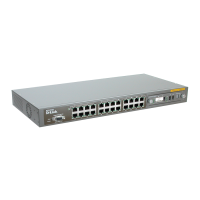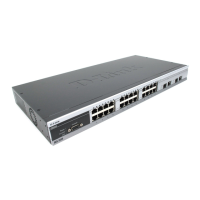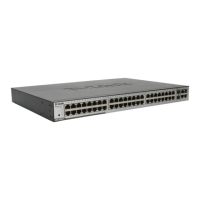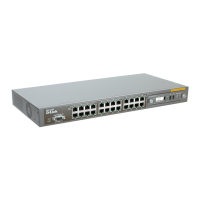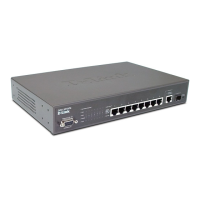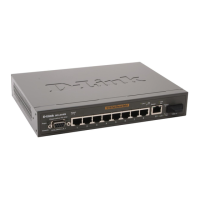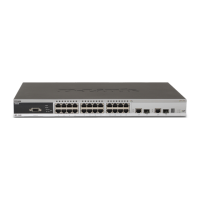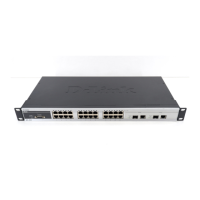10/100 Fast Ethernet Switch User’s Guide
Switch Management 29
On the Bridge Level
♦ Root Bridge: The Switch with the lowest Bridge Identifier
is the Root Bridge. Naturally, you will want the Root Bridge
to be the best Switch among the Switches in the loop to
ensure the highest network performance and reliability.
♦ Bridge Identifier: This is the combination of the Bridge
Priority (a parameter that you can set) and the MAC
address of the Switch. Example: 4 00 80 C8 00 01 00,
where 4 is the Bridge Priority. A lower Bridge Identifier
results in a higher priority for the Switch, and thus
increases it probabily of being selected as the Root Bridge.
♦ Designated Bridge: From each LAN segment, the
attached Bridge that has the lowest Root Path Cost to the
Root Bridge is the Designated Bridge. It forwards data
packets for that LAN segment. In cases where all Switches
have the same Root Path Cost, the Switch with the lowest
Bridge Identifier becomes the Designated Bridge.
♦ Root Path Cost: The Root Path Cost of a Switch is the
sum of the Path Cost of the Root Port and the Root Path
Costs of all the Switches that the packet goes through. The
Root Path Cost of the Root Bridge is zero.
♦ Bridge Priority: This is a parameter that users can set.
The smaller the number you set, the higher the Bridge
Priority is. the higher the Bridge Priority, the better the
chance the Switch will be selected as the Root Bridge.
On the Port Level
♦ Root Port: Each Switch has a Root Port. This is the port
that has the lowest Path Cost to the Root Bridge. In case
there are several such ports, then the one with the lowest
Port Identifier is the Root Port.

